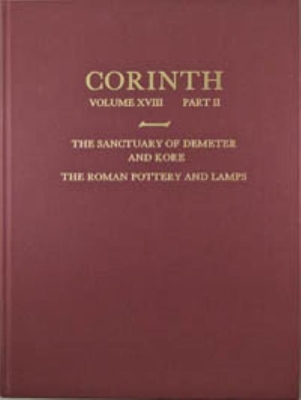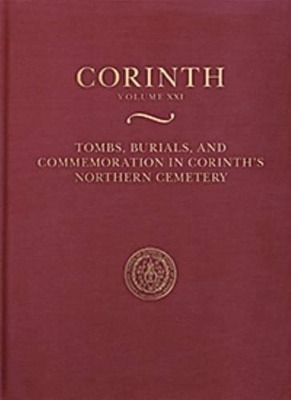Corinth
1 primary work • 2 total works
Book 18.2
In the series of final publications for the Sanctuary of Demeter and Kore, this book presents ceramic material from the Roman period (primarily from the middle of the 1st century to the end of the 4th century A.D.) in which is included the relatively small number of Roman lamps. Since even small fragments of lamps can be easily identified, the author has chosen them for the chronological framework of the volume, cataloguing 62 examples of some 876 found. The catalogue of 214 pieces selected from the vast amounts of pottery unearthed forms a corpus of common and unique finds from the sanctuary, with attention to sources, chronology, and possible light on the nature of the cult. The history of the Roman sanctuary is reflected in the lamps and fine wares, which are paralleled elsewhere; a preliminary typology is developed for the coarse wares, which are primarily local in origin. A lot list follows giving the inventory numbers of the catalogued Roman objects and context coins, with context descriptions. The concordance is divided into lamps and pottery, within and outside the sanctuary, the latter with references to any previous publications. A general index precedes those of text references to catalogued objects, signatures and potter's stamps, and findspots mentioned in the text.
Book 21
Tombs, Burials, and Commemoration in Corinth's Northern Cemetery
by Kathleen Warner Slane
Published 31 July 2017
Rescue excavations were carried out along the terrace north of Ancient Corinth by Henry Robinson, the director of the Corinth Excavations, and the American School of Classical Studies at Athens on behalf of the Greek Archaeological Service, in 1961 and 1962. They revealed 70 tile graves, limestone sarcophagi, and cremation burials (the last are rare in Corinth before the Julian colony), and seven chamber tombs (also rare before the Roman period). The burials ranged in date from the 5th century B.C. to the 6th century A.D., and about 240 skeletons were preserved for study. This volume publishes the results of these excavations and examines the evidence for changing burial practices in the Greek city, Roman colony, and Christian town. Documented are single graves and deposits, the Robinson "Painted Tomb," two more hypogea, and four built chamber tombs. Ethne Barnes describes the human skeletal remains, and David Reese discusses the animal bones found in the North Terrace tombs. The author further explores the architecture of the chamber tombs as well as cemeteries, burial practices, and funeral customs in ancient Corinth. One appendix addresses a Roman chamber tomb at nearby Hexamilia, excavated in 1937; the second, by David Jordan, the lead tablets from a chamber tomb and its well. Concordances, grave index numbers, Corinth inventory numbers, and indexes follow. This study will be of interest to classicists, historians of several periods, and scholars studying early Christianity.

